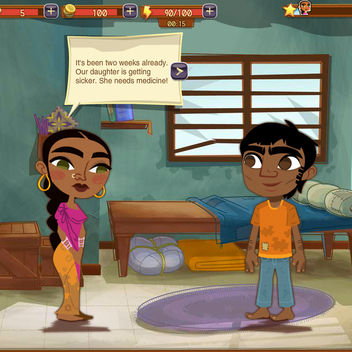by Kristin Bezio
There has been a lot of noise recently about the problem of violence in videogames, how violent videogames are corrupting the nation’s young men, and how we apparently need to “do something” about this. There are a lot of voices weighing in on this debate, from Joe Biden to Ralph Nader to Lamar Alexander to Kotaku’s Jason Schreier to game scholar Ian Bogost to Atlantic Monthly’s Daniel Greenberg. I’ve even ended up on the “print circuit” with a piece published both on paper and online at the Christian Science Monitor.
But this piece isn’t going to be another rant about how the talking heads should a) play a game before they whine about how it’s corrupting our youth; b) about how “young men” are not the only ones playing games anymore, since, as TheMarySue has noted, the age of the average gamer is now 37 and 42% of us are women; c) about how we need to stop playing scape-goat with every new or new-ish form of popular culture instead of looking at our own behavior; or d) what sort of legislation would be effective in curbing violence (because I have no idea).
Instead, I want to look at games that deliberately remove themselves from violent space in an effort to actively – rather than simply symbolically – comment upon and improve their world. Ian Bogost, scholar and author of Persuasive Games, addresses some of these in that book, and he talks about them as “serious games,” games that are actively trying to teach us about ethics, thought-experimentation, and social change. One example he uses is Molleindustria’s The McDonald’s Videogame (2000), which he describes as an “anti-advergame, a game created to censure or disparage a company rather than support it” (29).
But there are positive-effect games, too, in addition to those whose purpose is criticism. For instance, FoldIt allows you to assist in the project of unfolding complex proteins, and FreeRice donates bowls of rice for each vocabulary word you get correct. Recently, the New York Times ran a piece about Games for Change, a company currently producing a gamified version of Sheryl WuDunn and Nicholas Kristof’s Half the Sky: Turning Oppression into Opportunity for Women Worldwide. These are, in Bogost’s term, “serious games” seeking to accomplish serious change in the world through mechanics of crowd-sourcing and gameplay.
No one talks about serious games when the catch-phrase of “violent videogames” is brought up by the media (with the noted exception of the New York Times, who should get credit for that), and no one mentions the non-serious games that don’t contain violence, either (Flow, Flower, Braid, etc.). They focus in on the shooters, perhaps because they are the obvious example of the “quintessential videogame,” or, at least, the quintessential violent videogame.
But here’s the thing. There are as many types of games as there are types of movies, and while there are movies that involve gratuitous violence and explosions, there are also romantic comedies, kids’ cartoons, stupid pot-head movies, and art films. In the same way in the game world, there are first-person shooters (FPS), role-playing games (RPG), puzzle games, real-time-strategy games (RTS), tower-defense games, trivia games, and serious games. Admittedly, about as many people play serious games as go to art films (which is to say, some, but not that many in the grand scheme of things), so the major market for games really does focus on the FPS and RPG titles, just as the summer blockbusters in film are those that tend to involve lots of combat or explosions.
But that doesn’t mean we should ignore art films or serious games. It also doesn’t mean that those are our only source of critical thought in either genre. I’m not about to argue that A Good Day to Die Hard was a quality film with complex social criticism (oh, that movie was disappointingly terrible, and I love the Die Hard movies), nor am I going to say that the Call of Duty series is designed to argue against guns … but both of them do have something to say, or they wouldn’t have been made. The Die Hard series does talk about the threat the violence imposes on our society – and that counter-violence is necessary because of the initial acts of greed that motivate the instigators (John McClaine wouldn’t need to shoot the “bad guys” if they didn’t exist). The Call of Duty series criticizes the pervasiveness of war that has turned our daily spaces – gardens, public streets, airports, shopping malls – into battlefields. While it has us play within those spaces, there is a melancholy to the destroyed mannequins, the goods trampled underfoot, the empty and broken chairs in the airports, the trash that floats through the abandoned alleys of the favela.
In essence, all games are – to a greater or lesser degree – serious games, and all games are the product of their society. Some of them use satire (as much as I hate Saint’s Row, the series is a satire on the glorification of gang violence), some of them use tragedy (Gears of War), and some use flower petals (Flower) as the media through which they depict a desire for a saner world. However, the violence and conflict that is at the core of most games – and films – springs from the fact that conflict and, yes, violence are a part of the society that has allowed them to be created. Our media shows us these things, asks us to watch them or interact with them, because we have to do so in real life (IRL). Hopefully the ways in which we cope with violence IRL are far less immediate than the ways in which we have to do so virtually in games, but we nevertheless still have to process the presence of violence in our world on a daily basis. And perhaps by seeing it dealt with in fictional media, and by having to deal with it ourselves in virtual fictions, we can better determine how we want to deal with it when we encounter it in non-virtual space.




[…] over to yesterday’s The Learned Fangirl post on “Violence, Virtual Space, and ‘Serious Gam…” It’s a more positive spin on my usual rants about why we shouldn’t blame games […]